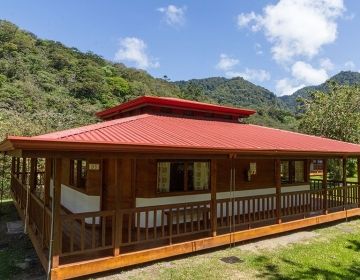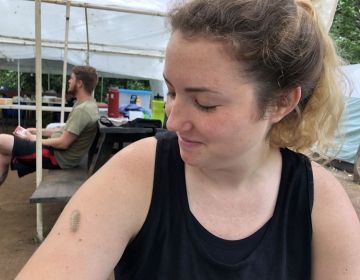Student's Projects, Independent Research in Tropical Ecology (Part 3)
The Independent Research is coming to an end, and the students are finishing their data collection and coming to great conclusions with the data they are finding.
Christine Bradley from the California Polytechnic State University is studying the Owl butterfly (Caligo spp) and its oviposition preference and caterpillar survival on native and invasive host plants in the Order Zingiberales. Some families in the Zingiberales order are introduced, like the banana family or Musaceae, and some other families like Heliconiaceae and Maranthaceae are native. Christine studied the oviposition preference, number of eggs found per plant, and instar sizes of two different species of Owl butterflies Caligo memnon and C. illioneus on six species of plants in the Zingiberales order, 5 species of native plants (4 in the Heliconiaceae family and 1 in the Maranthaceae) and 1 especies, Musa acumminata in the introduced family Musaceae.
Christine Bradley (California Polytechnic State University) checking one of the Heliconia plants looking for eggs or caterpillars of the Owl butterfly (Caligo spp).
Christine marking one of the Owl Butterflies (Caligo spp).
Drew Rosso from the University of Notre Dame looked at the function of drip tips on Cloud Forest plant leaves. Drip tips are pointy projections found in lots of different leaves in the tropics, these drip tips help the leaves with their water shedding capacity to keep the surface of the leaves clean and dry; most of the studies in the tropics about drip tips function has shown some important capacity on shedding rain water but none of them have show the importance of drip tips draining water from mist in cloud forest species. For this reason Drew choose seven different species of leaves with drip tips and one without and placed them in aquaria with artificial misters to simulate the cloud forest mist and determine if the drip tips had an effect on the reduction of water on the leaf surface.
Drew's set up of the leaves receiving mist from an artificial mister.
Picture of the inside of one of Drew's experimental aquariums, different drip tip types on the leaves and the erlenmeyer below them to collecting the water drained after the mist exposure.
Drew Rosso (University of Notre Dame) measuring the water collected from one of the leaves with drip tips after the mist exposure.
Related Posts
CIEE Monteverde Campus Used in Insect and Light Research Study
Have you ever wondered why insects are drawn to artificial light? From campfires to porch lightbulbs, moths and other insects appear to congregate around these sources of light as soon... keep reading
Our program through the eyes of a Student
Our Summer student Maddie Beale from the State University of New York at Fedonia wrote a blog about how she found us, the process of choosing our program and the... keep reading
Independent Research Projects: Part I
The Tropical Ecology & Conservation students are working on their independent projects right now, many different ecology topics are being cover that involve both field and lab work. From Leaf-cutting... keep reading







